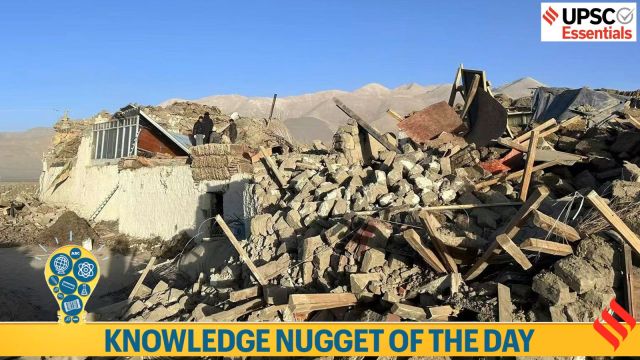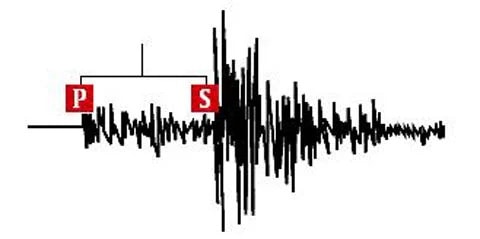An earthquake measuring around 7 on the Richter scale hit Tibet on January 7, killing around 100 people and damaging about 1,000 houses. Its epicentre was about 75 kilometres northeast of Mount Everest and close to Nepal, but no major damage was reported there. This quake was the most powerful in the area since the catastrophic earthquake in April 2015 in Nepal, which resulted in approximately 10,000 fatalities.
Story continues below this ad
Key Takeaways :
1. According to the United States Geological Survey (USGS), there have been 10 earthquakes of at least magnitude 6 in the area affected on Tuesday over the past century. This frequency is due to the unique movements of the tectonic plates that make up the Earth’s crust.
2. An earthquake is an intense shaking of the ground caused by movement under the earth’s surface. It happens when two blocks of the earth suddenly slip past one another, according to USGS. This releases stored-up ‘elastic strain’ energy in the form of seismic waves, which spreads through the earth and cause the shaking of the ground.
3. The earth’s outermost surface, crust, is fragmented into tectonic plates. The edges of the plates are called plate boundaries, which are made up of faults. The tectonic plates constantly move at a slow pace, sliding past one another and bumping into each other. As the edges of the plates are quite rough, they get stuck with one another while the rest of the plate keeps moving. Earthquake occurs when the plate has moved far enough and the edges unstick on one of the faults.
4. The location below the earth’s surface where the earthquake starts is called the hypocenter, and the location directly above it on the surface of the earth is called the epicentre.
Story continues below this ad
Why is the Himalayan zone seismically active?
1. The Himalayan mountain range began to form approximately 40 to 50 million years ago when the Eurasian and Indian tectonic plates started to collide. According to the USGS, “Seismicity in the Himalaya dominantly results from the continental collision of the India and Eurasia plates, which are converging at a relative rate of 40-50 mm/yr.”
2. At least five earthquakes of magnitude greater than 7 have struck the Hindu Kush region since 1950. Seismologist Sankar Kumar Nath earlier told The Indian Express, “This region has a peculiar tectonic formation. While the Indian plate is getting under the Himalayas, a phenomenon that is occurring all along the Himalayan range, the Eurasian plate is getting subducted under the Pamir mountains. In addition, there are several other faultlines. This is the convergence point for several seismic forces.”
Most Earthquake-Prone Countries in the World
1. Several Asian countries are highly prone to earthquakes, with China and Indonesia experiencing the most seismic activity. Japan records the highest number of earthquakes globally when considering the relative frequency.
2. Indonesia stands out as the most earthquake-prone country, having experienced 2,212 earthquake events with a magnitude of 4 or above. This figure places Indonesia above both Mexico and the Philippines, according to the United States Geological Survey (USGS).
Story continues below this ad
3. In an analysis of the most devastating earthquakes globally, China surpasses Indonesia, as reported by the U.S. government’s National Oceanic and Atmospheric Administration (NOAA). The NOAA’s data sheds light on the impact of seismic activity across the globe, highlighting the countries most affected by these catastrophic events over the nearly three-decade period.
Source: NOAA, accessed via Statista (Note: The earthquake data provided covers the period from 1990 to January 2, 2024. This information is based on events that meet at least one of the following criteria: damages exceeding $1 million, a death toll of 10 or more, or a magnitude of 7.5 or greater.)
BEYOND THE NUGGET: The Theory Of Plate Tectonics
The surface of the Earth is divided into 7 major plates and several minor ones. They move a few centimetres a year, riding on semi-molten layers of rock underneath the crust. As the plates move, they pull apart or collide, unleashing the powerful movements known as earthquakes.

Story continues below this ad
Types of Plate Boundary

Slippage Along A Fault

Earthquake Wave Types
1. When an earthquake occurs, it generates seismic waves that cause the shaking we experience. There are two major types of seismic waves: body waves and surface waves. Body waves comprise P and S waves, and they are called body waves because they can travel through the Earth’s interior, rather than being confined near the surface.
2. Primary or ‘P’ wave is a type of sound wave that travels through rock. In a P wave, the rock particles are alternately compressed and expanded, a process known as compressions and dilatations. This is why P waves are also referred to as compressional waves. They are capable of traveling through solids, liquids, and gases. Notably, P waves can move through the liquid outer core of the Earth.
3. In Secondary or ‘S’ wave, the rock particles slide past one another, which creates shear – hence, S waves are also known as shear waves. S waves cannot travel through liquids or gases, which means they do not propagate through the ocean or the outer core.

Story continues below this ad
4. Surface waves are named for their tendency to be confined near the Earth’s surface, as opposed to traveling through the Earth’s interior like P and S waves. There are two main types of surface waves: Love waves, which are shear waves that are trapped near the surface, and Rayleigh waves, which exhibit particle motions similar to those of water particles in ocean waves.
(Sources: Understanding the earthquake, Tibet earthquake leaves 95 dead, List of countries hit by the most major earthquakes, Turkey earthquake )
For your queries and suggestions write at roshni.yadav@indianexpress.com
Subscribe to our UPSC newsletter and stay updated with the news cues from the past week.
Story continues below this ad
Stay updated with the latest UPSC articles by joining our Telegram channel – Indian Express UPSC Hub, and follow us on Instagram and X.






































